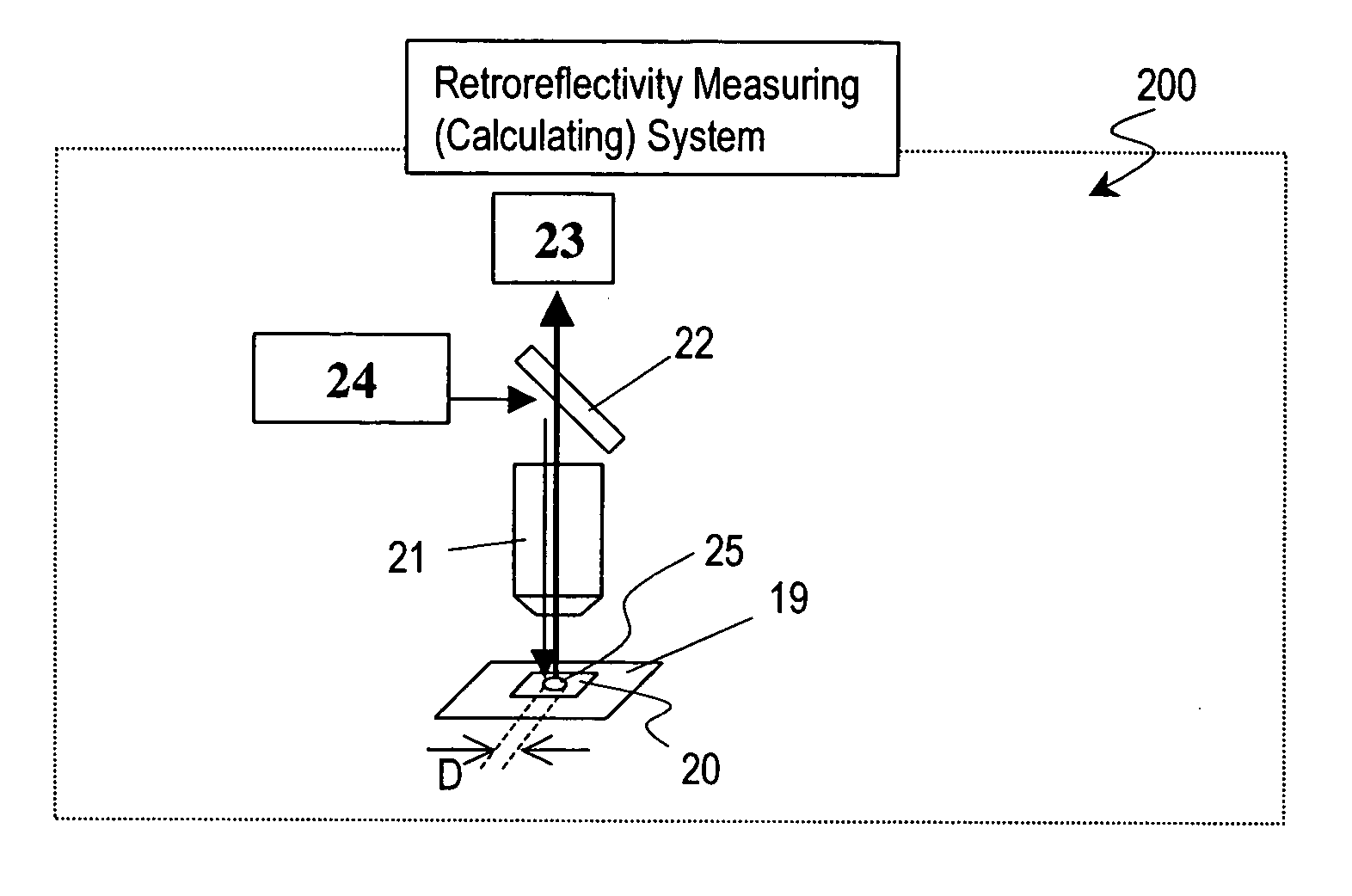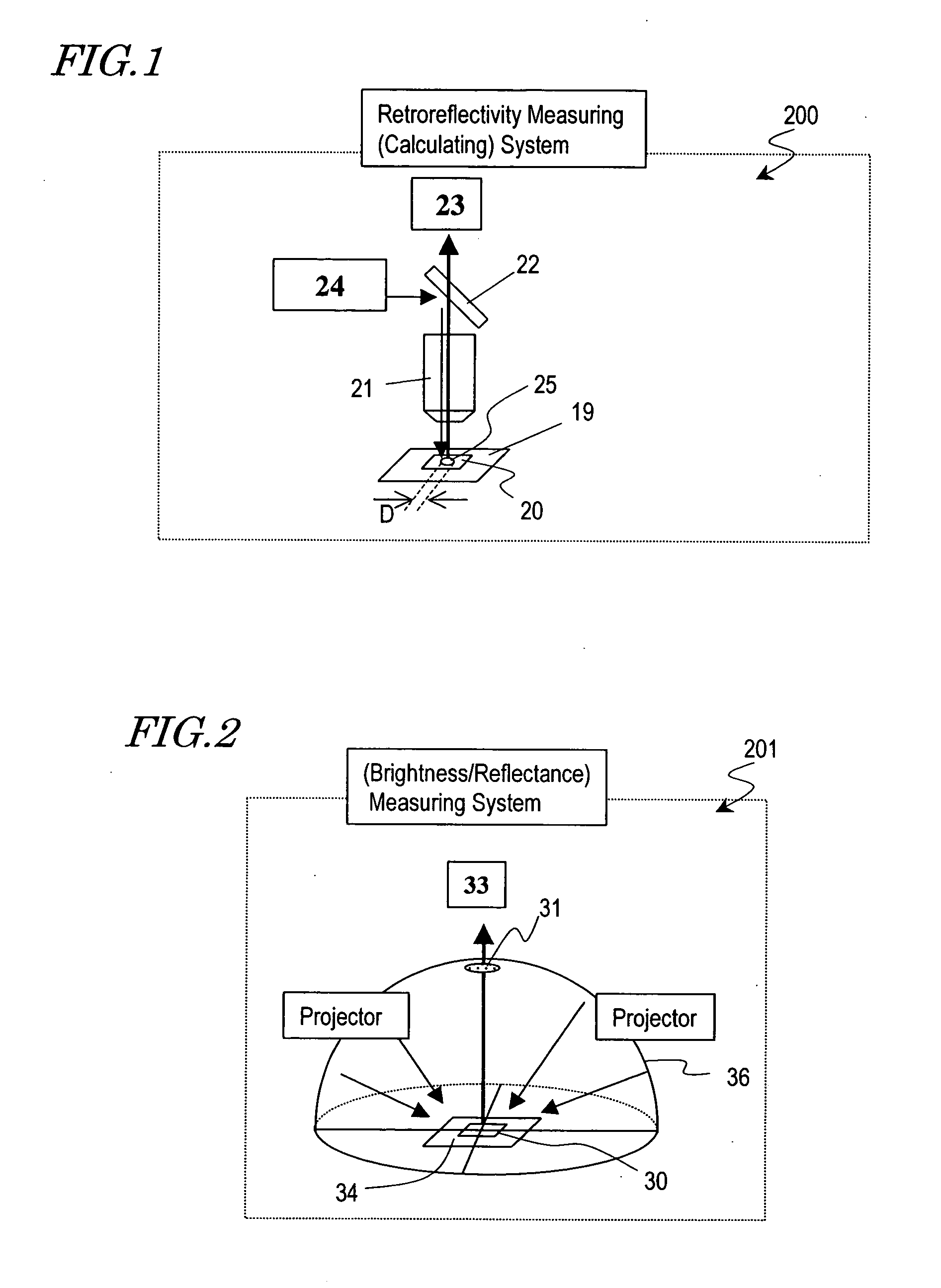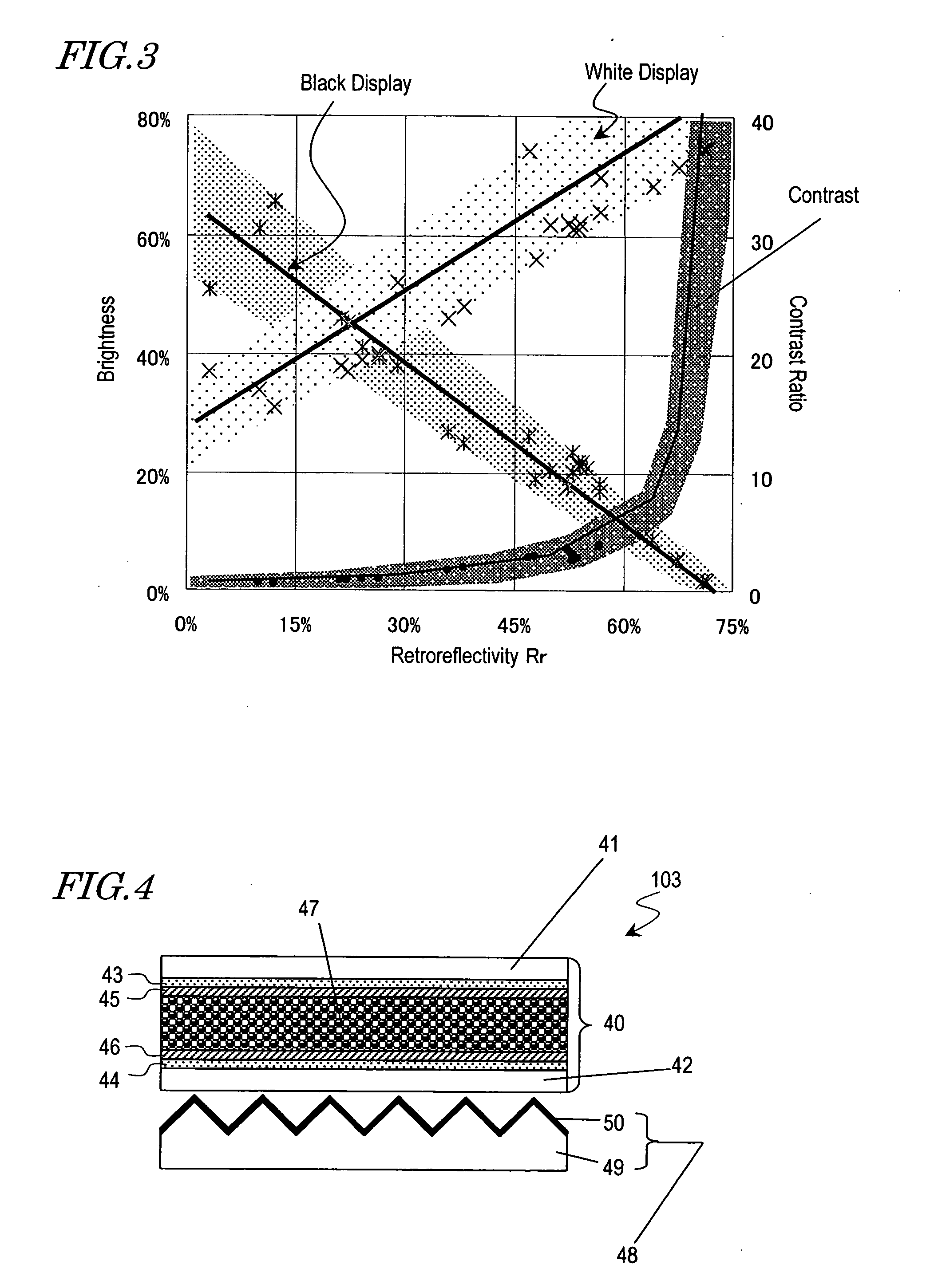Reflective display device
a display device and display technology, applied in the direction of optical elements, identification means, instruments, etc., can solve the problems of unintentional color mixture, abnormal display state, and inevitably created gap between beads, and achieve excellent display performan
- Summary
- Abstract
- Description
- Claims
- Application Information
AI Technical Summary
Benefits of technology
Problems solved by technology
Method used
Image
Examples
embodiment 1
[0095] Hereinafter, a reflective display device according to a first specific preferred embodiment of the present invention will be described.
[0096] First, the configuration of a display device 103 according to this preferred embodiment will be described with reference to FIG. 4. The display device 103 includes a retroreflector 48 and a liquid crystal cell 40, which is provided closer to the viewer than the retroreflector 48 is.
[0097] The liquid crystal cell 40 includes a pair of transparent substrates 41 and 42 facing each other and a liquid crystal layer 47 interposed between the substrates 41 and 42. The transparent substrates 41 and 42 are made of a transparent material such as glass or a polymer film. On the surface of the transparent substrate 41 provided closer to the viewer, a transparent electrode 43 and an alignment film 45 are stacked in this order so as to face the liquid crystal layer 47. On the surface of the other transparent substrate 42, a transparent electrode 44...
embodiment 2
[0144] Hereinafter, a reflective display device according to a second specific preferred embodiment of the present invention will be described.
[0145] First, the configuration of a display device 104 according to this preferred embodiment will be described with reference to FIG. 10. The display device 104 of this preferred embodiment is preferably a color display device.
[0146] The display device 104 has the same configuration as the display device 103 of the first preferred embodiment described above except that the display device 104 further includes a color filter layer 51 between the transparent substrate 41 closer to the viewer and the transparent electrode 43. More specifically, the color filter layer 51 preferably includes red (R), green (G) and blue (B) color filters, which are arranged in a regular pattern, and an opaque layer (or black matrix (BM)) provided between adjacent color filters. Each of these color filters may have dimensions of 50 μm×150 μm, for example. It shou...
embodiment 3
[0150] Hereinafter, a reflective display device according to a third specific preferred embodiment of the present invention will be described.
[0151] First, the configuration of a display device 105 according to this preferred embodiment will be described with reference to FIGS. 11 and 12. The display device 105 of this preferred embodiment is an active-matrix-addressed display device.
[0152] As shown in FIG. 12, the display device 105 preferably includes a display section 91 and driver circuitry for driving the display section 91.
[0153]FIG. 11 shows a detailed configuration of the display section 91. As shown in FIG. 11, the display section 91 includes a liquid crystal layer 73 and a retroreflector 48, which are provided between a pair of substrates 71 and 72 that are opposed to each other. The substrate 71 is an active-matrix substrate including multiple thin-film transistors 76 thereon. The retroreflector 48 includes a square corner cube array 74, which is provided on the substr...
PUM
 Login to View More
Login to View More Abstract
Description
Claims
Application Information
 Login to View More
Login to View More - R&D
- Intellectual Property
- Life Sciences
- Materials
- Tech Scout
- Unparalleled Data Quality
- Higher Quality Content
- 60% Fewer Hallucinations
Browse by: Latest US Patents, China's latest patents, Technical Efficacy Thesaurus, Application Domain, Technology Topic, Popular Technical Reports.
© 2025 PatSnap. All rights reserved.Legal|Privacy policy|Modern Slavery Act Transparency Statement|Sitemap|About US| Contact US: help@patsnap.com



